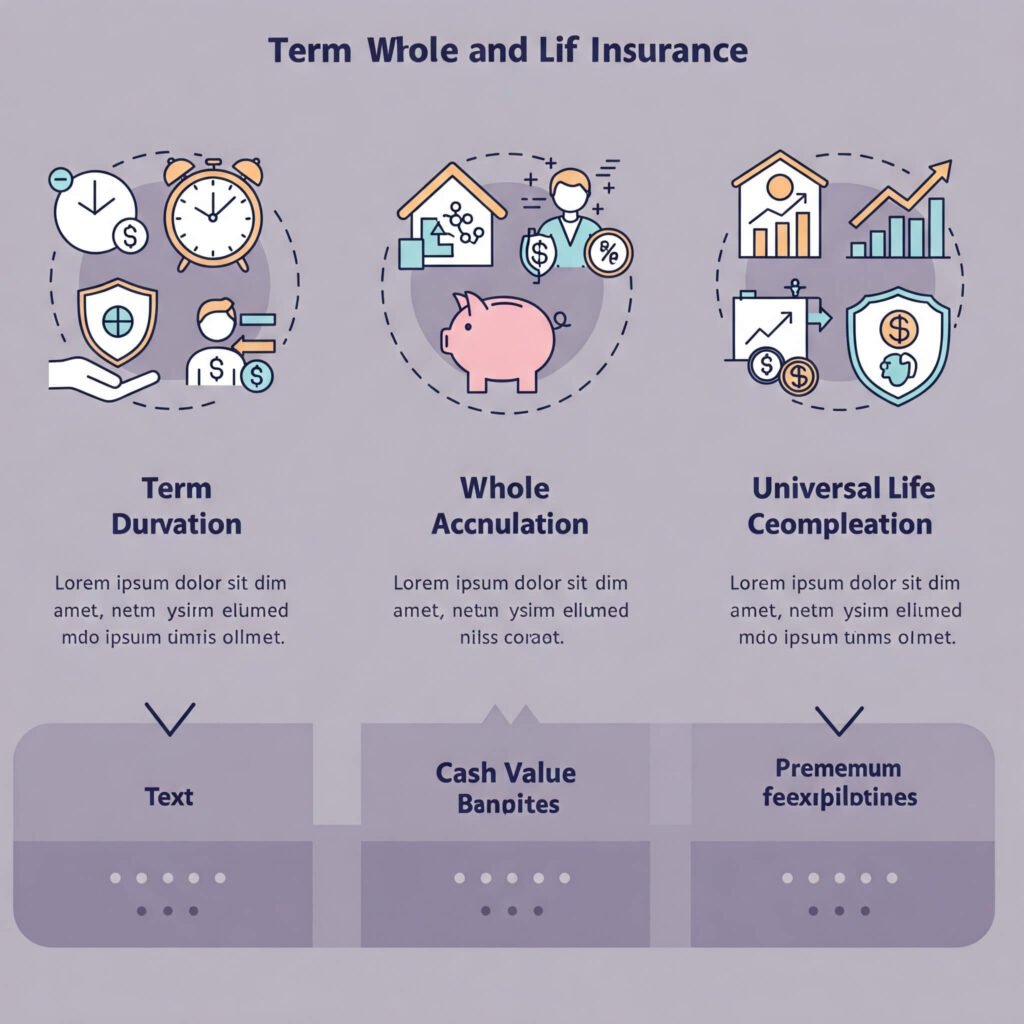Life insurance is like a backup plan for your people—cash to keep ‘em going if you bite the dust. I got woke to this after a late-night panic about my brother. It’s got types: term, whole, universal, blah blah. got a solid rundown. I’m sitting here, rain fuzzing my window, thinking, “Why’s this so damn heavy?” Dig the idea of protecting my fam, but hate how premiums feel like a kick in the wallet. My head’s a mess trying to get this straight.
Types of Life Insurance and Why They’re a Lot
There’s a ton of life insurance policies, and I’ve fumbled through quotes, messing up big time. Here’s the lowdown:
- Term: Covers you for a set time, cheap but doesn’t last. Looked at it, seems okay for my broke ass.
- Whole : Lasts forever, builds cash value. Too pricey for me—oops.
- Universal Life: Flexible but confusing. I got lost in the fine print.
- Variable Life: Tied to investments, super risky. Ain’t touching that.
Bankrate’s guide helped me get it. I’m torn—love term life’s cheapness, but want whole life’s long-term deal.

My Total Life Insurance Freakout
Picture this: Last winter, my kitchen’s a disaster—sticky floor from spilled kombucha, cat staring like I’m a deadbeat. I’m looking up life insurance quotes, trying to be a grown-up for my brother. Plugged in my info, got a quote that’d eat my whole paycheck. Spilled my coffee, splattered my laptop screen. Tried another company, got confused by “cash value” nonsense, gave up. Told my buddy over tacos, and he’s like, “Yo, you didn’t compare plans?” Yeah, I’m a hot mess. That moment, rain pounding, cat judging, showed me needs serious homework.
Outbound Link: Investopedia: Why Life Insurance Is Important

Outbound Link: NerdWallet: Types of Life Insurance
My Sloppy Tips for Tackling
Here’s what I learned, but I’m no expert, so maybe don’t bet your life on this:
Get a pro: Too stubborn to hire one, but Motley Fool says advisors can save you policy to cover his business loans and support his wife. Working with an advisor helped him find a policy that fit his budget.
Figure your needs: What’s your family need if you’re gone? Underestimated mine, got schooled.
Shop around: Different companies, different rates. Forbes has a good list.
Read the terms: Premiums, coverage length. Skipped this, regretted it big time.
Health check: Your health jacks up costs. My late-night taco runs didn’t help.

Wrapping Up This Life Insurance Rant
Man, I’m beat. Life insurance is like picking a coffee order—simple ‘til you see a million options and pick the crap one. Here in Portland, rain’s still going, my cat’s hogging my lap, and I’m hopeful but also freaking out about my brother’s future. I’m no guru—just a dude who bought a console instead of planning—but life insurance is doable. Hit up NerdWallet or Bankrate, compare some policies, and don’t be me with the coffee-splattered quotes.



